How the Chinese built the railway to Tibet
Categories: Asia
By Pictolic https://pictolic.com/article/how-the-chinese-built-the-railway-to-tibet.htmlIn just five years and three and a half billion dollars, China built a 1,150-kilometer highway connecting the "Roof of the World" with the main territory of the country.
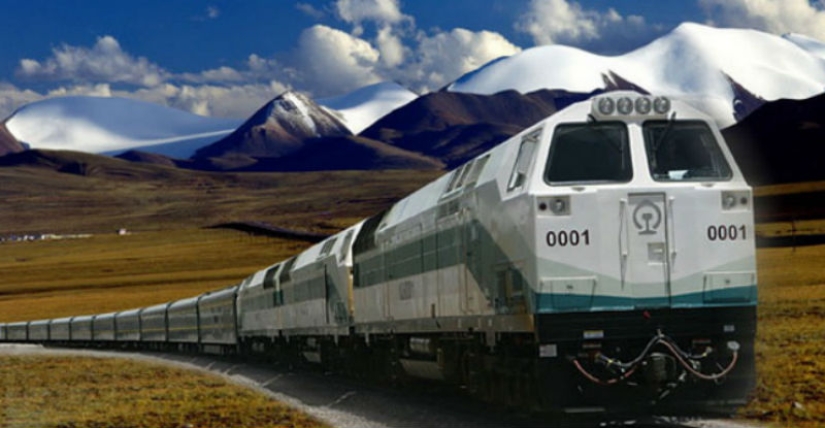

Back in the early 1920s, the revolutionary Sun Yat-sen in his program "Plan for the Reconstruction of China" proposed to build about 100,000 kilometers of new railways in the country, including lines on the Tibetan Plateau. For objective reasons, they were able to return to the idea of the "father of the nation" only in the 1950s under Chairman Mao. The railway project to the capital of Tibet, Lhasa, was approved by 1960, but its construction was frozen for almost a decade and a half — China was hardly reaping the fruits of the "Big Leap".

Only in 1974, the construction of the first section of the future highway, from the capital of Qinghai Province, Xining to Golmud, already on the Tibetan Plateau, resumed. 814 kilometers of railway were built by the army and prisoners in five years, by 1979, but passenger traffic opened here only in 1984.


The work on the second, high-altitude section to Lhasa was associated with engineering tasks of particular complexity: the builders had to work in conditions of permafrost, lack of oxygen and, moreover, the unique Tibetan ecosystem, the preservation of which was declared by the Chinese Party and the government to be of paramount importance.

Only at the beginning of the XXI century, the country reached the level of technological readiness, which allowed it to start implementing a large-scale infrastructure project. Moreover, the construction of the railway to Lhasa has become a key stage of the development program of Western China, the purpose of which is to eliminate the disparity in the development of the eastern and western regions of the country. Another important, and perhaps the main, task of the Chinese government was to strengthen the ties of the Tibetan Autonomy, over which control was re-established only in 1950, with the main Chinese territory.
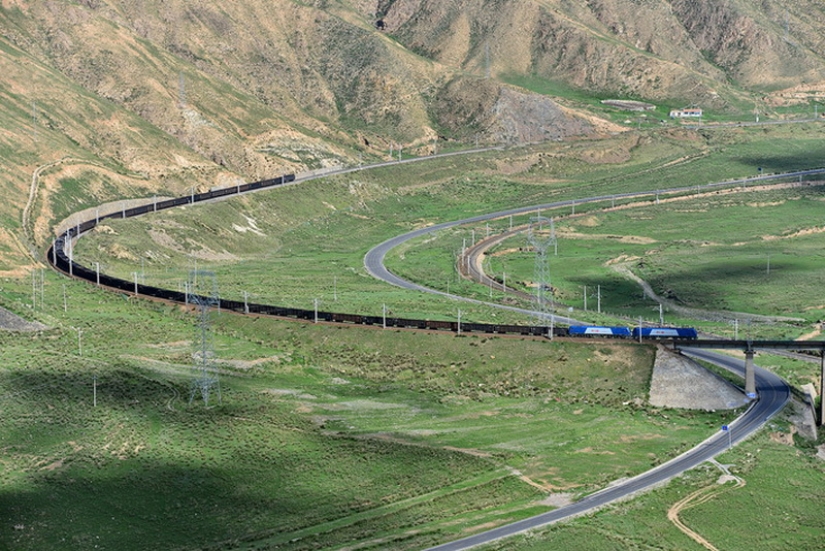
According to the project approved in 2000 by Chinese President Jiang Zemin, the total length of the new railway was supposed to be 1,142 kilometers. 45 stations were organized on this site, 38 of which were automatic, without maintenance personnel. The Tibetan highway from Golmud rose from a height of 2800 meters above sea level to the Tang-La Pass (5072 meters) and then descended again to Lhasa (3642 meters).

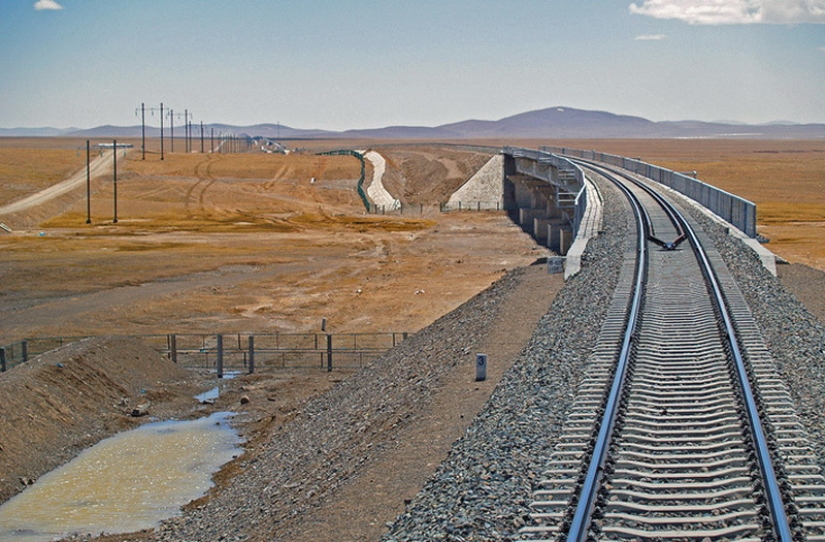
Golmud Railway Station.

The final terminal is in Lhasa.


About 80% of the entire new section (960 kilometers) passed through difficult mountainous areas at an altitude of more than 4000 meters above sea level, of which about 550 kilometers were located in the permafrost zone.


The construction of the railway there was a serious engineering problem. The fact is that the upper layer of permafrost has the property of thawing in a short summer period, sometimes turning into an impassable swamp. In this regard, the real threat was represented by the movement of the soil, which could lead to deformation and destruction of the path. In order to eliminate such a risk, the designers of the Qinghai-Tibet Road have developed a special scheme for its device, which actually isolates any influence of the highway on the environment and vice versa.
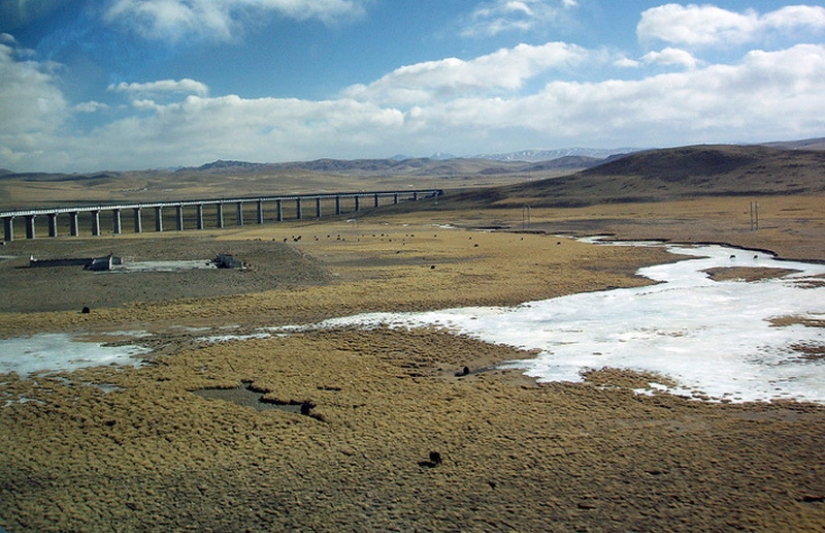
The rails were laid on a special embankment of cobblestones covered with a sandy layer. In the transverse projection, the embankment was perforated with a through network of pipes to ensure better ventilation, and its slopes were covered with special metal sheets that reflected sunlight and thereby further prevented its heating.
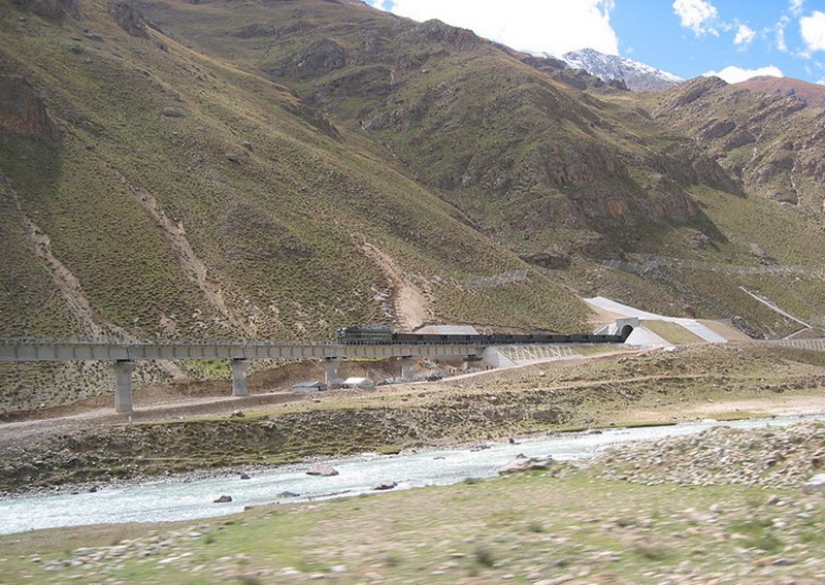
In some areas, wells filled with liquid nitrogen were also arranged. All these measures actually froze the embankment under the road, preventing the heating of the upper layer of permafrost, its thawing and subsequent deformation of the railway track.

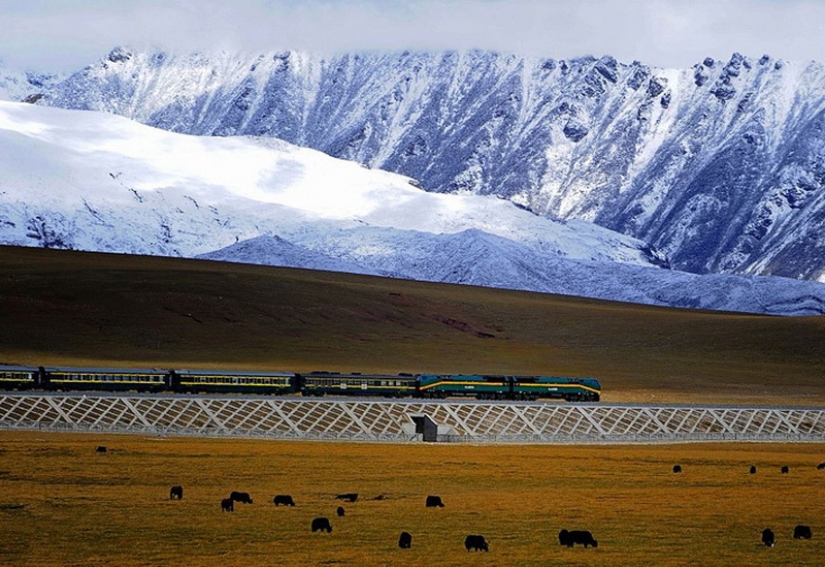
To compensate for the height differences in the construction areas, a significant part of the highway is laid on overpasses. In total, 675 bridges with a total length of 160 kilometers are arranged on its 1142 kilometers. The supports of these overpasses are essentially piles, the bases of which rest deep in the permafrost, so that seasonal thawing of its upper layer does not have any effect on the stability of the structure of the structure.
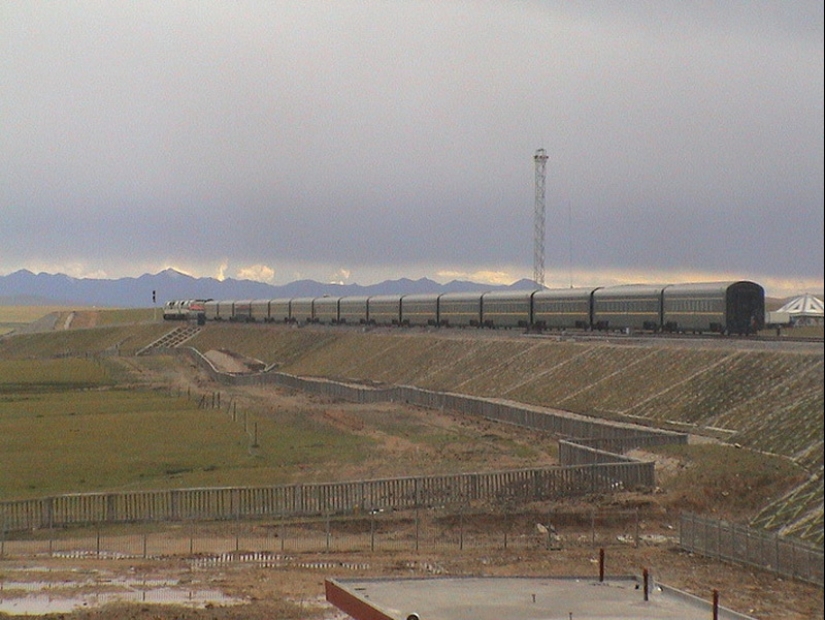
The gaps between the column supports do not interfere with the free circulation of air under them, which minimizes the additional thermal effect of the railway.
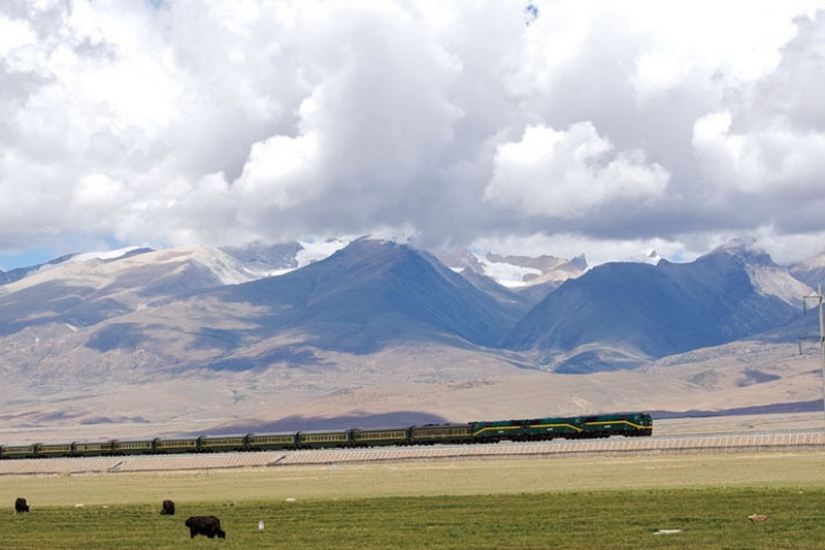
In addition to the technical component, an important advantage of the flyover sections is the fact that they do not interfere with the free movement of sometimes unique representatives of local fauna under the highway. The negative effect of foreign inclusion in the Tibetan ecosystem is thus reduced to a minimum.
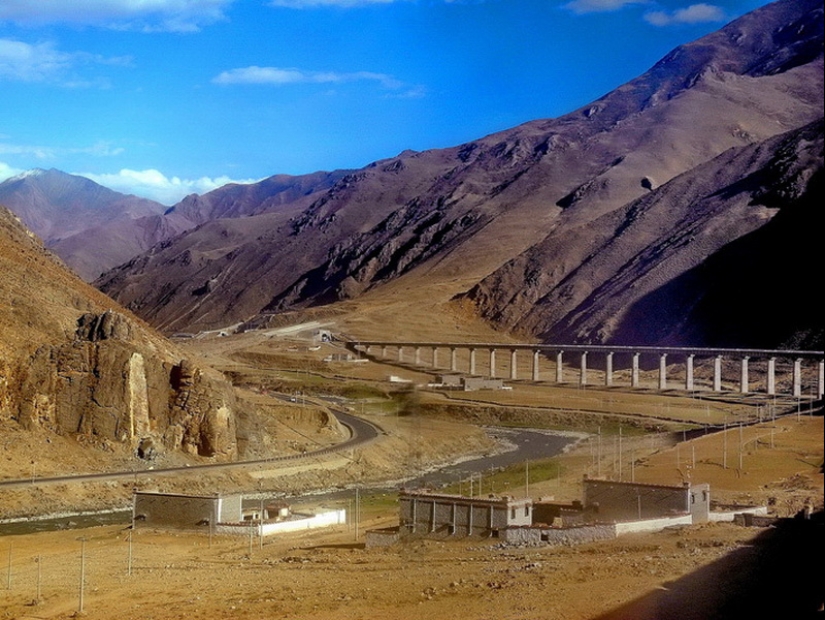
Sections of the Qinghai-Tibet Road laid on embankments on the surface of the earth are fenced along their entire length, and special tunnels and bridges are regularly laid for the passage of migrating animals.
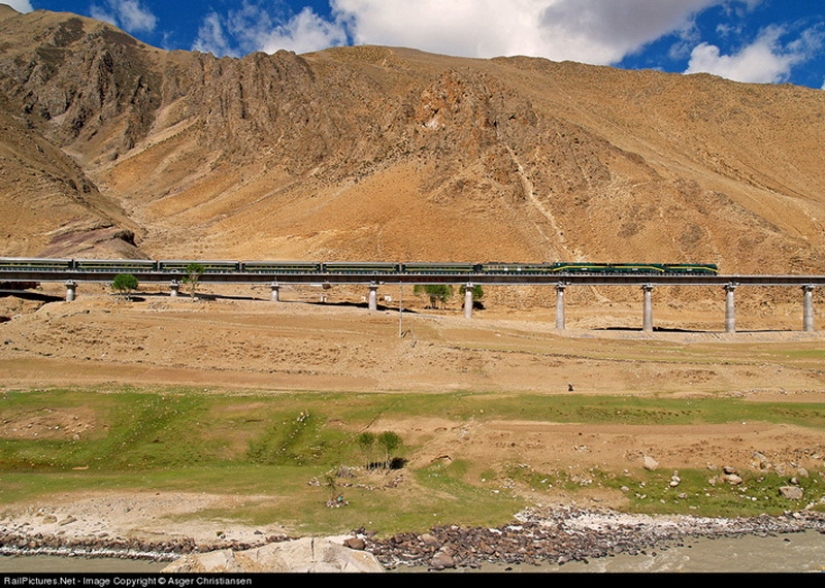

After the construction was completed, the Tibetan Highway set several railway construction records at once. 350 kilometers from Golmud at an altitude of 4900 meters above sea level, the highest mountain railway tunnel in the world was built, called Fenghoshan (Windy Volcano Tunnel)
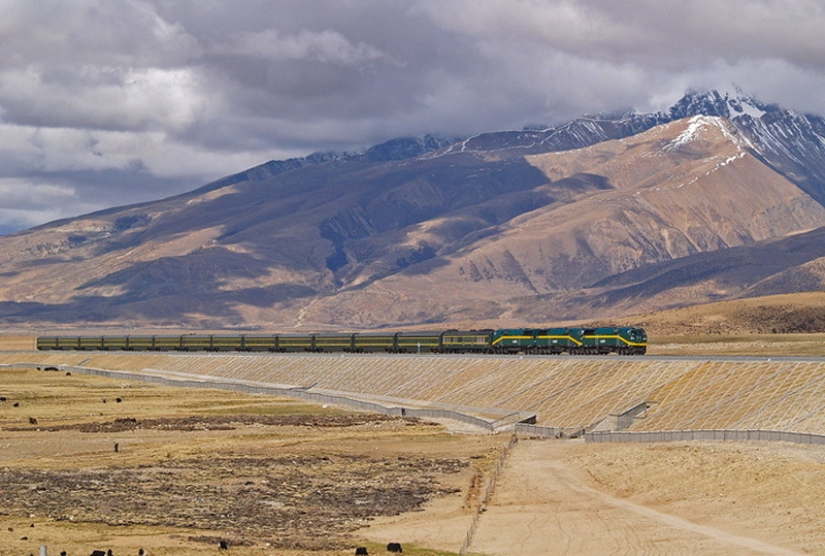
The Tang-La station on the mountain pass of the same name has become the highest mountain railway station in the world. The surrounding mountains seem more like hills, but this is a deceptive impression. In fact, the three-track Tang La is located at an altitude of 5068 meters only four meters below the highest point of the entire highway (5072 meters).
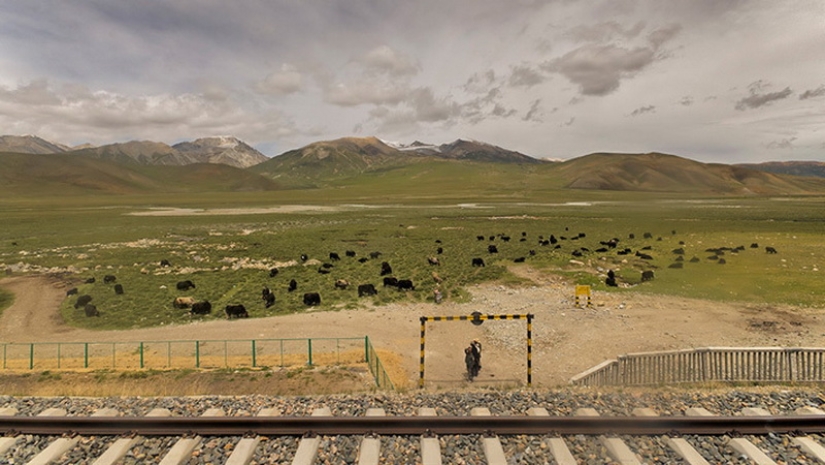
Although trains stop here, in fact it is just a single-track highway crossing. The station is fully automatic and is controlled from Xining, where the central control of the entire road is located. There are no settlements nearby, which, however, did not prevent the Chinese from building a fairly large railway station here, worthy of a record-breaking station.
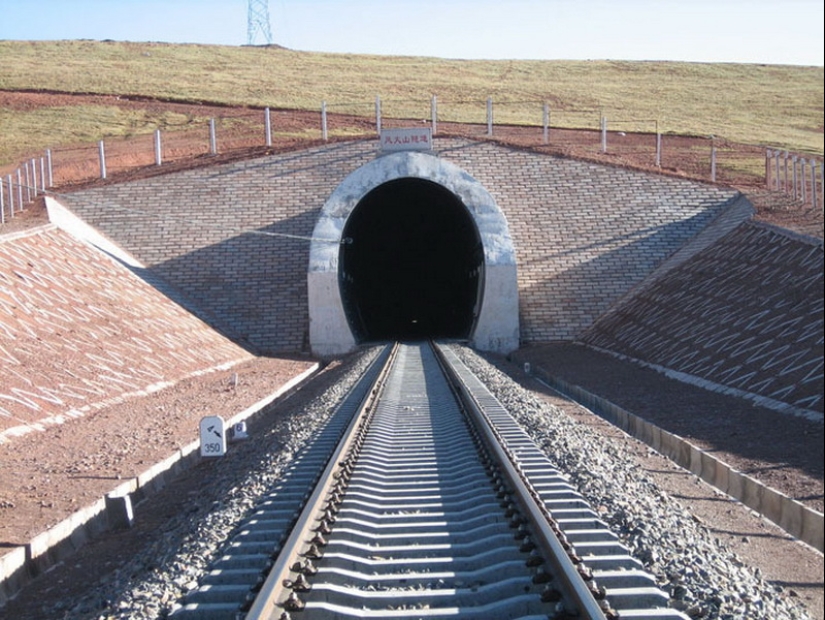
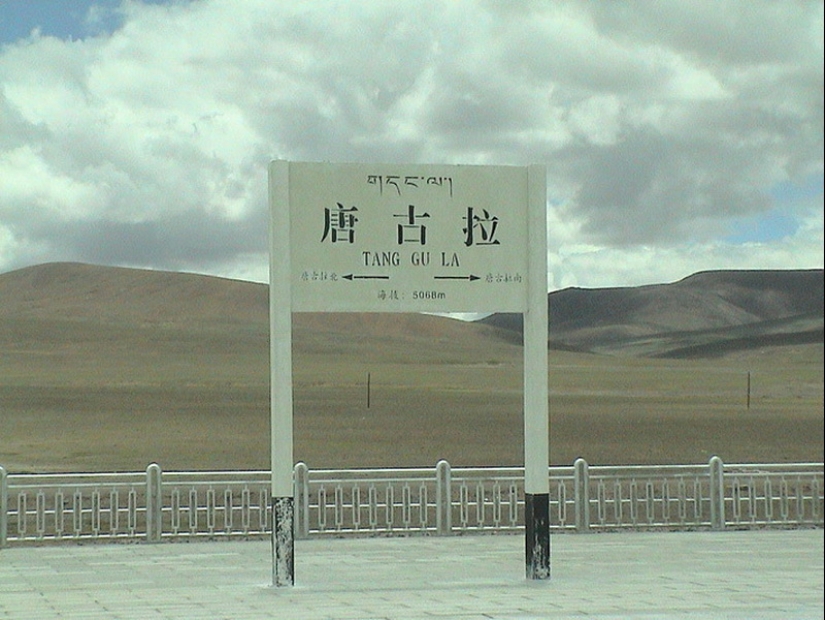
In most cases, the doors of the cars do not even open here. For an unprepared person to be at such an altitude, where the atmospheric pressure is only about 35-40% of the standard at sea level, poses a certain threat to health.

A special rolling stock was developed for the Qinghai-Tibet Road in order to make traveling through the high-altitude areas with their stunning landscapes only a pleasure for passengers. The American corporation General Electric has designed NJ2 diesel locomotives for the main line, modified for operation in high-altitude conditions, with a capacity of 5100 hp each. The locomotives are capable of reaching speeds of up to 120 km / h with a composition of 15 cars. In permafrost zones, their speed is limited to 100 km/h.

The cars for road maintenance were built at the Chinese factory of the Canadian concern Bombardier in the amount of 361 pieces (308 ordinary and 53 special tourist). All of them are actually hermetically isolated from the environment, the oxygen pressure inside is maintained close to the standard.
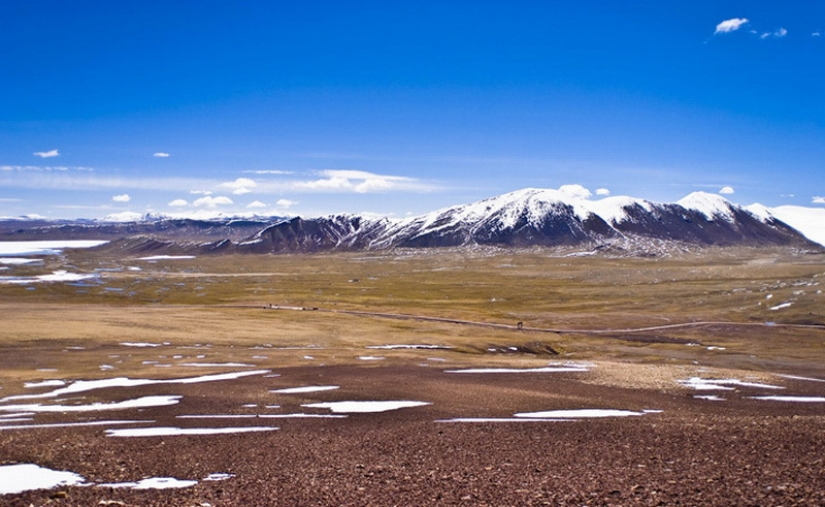
Despite this, attacks of altitude sickness caused by a lack of oxygen occurred in passengers. To prevent them, each seat in the cars is equipped with individual oxygen tubes on the model of hospital ones. Tinted windows of cars with a special coating protect passengers from excessive solar radiation, again characteristic of the highlands.

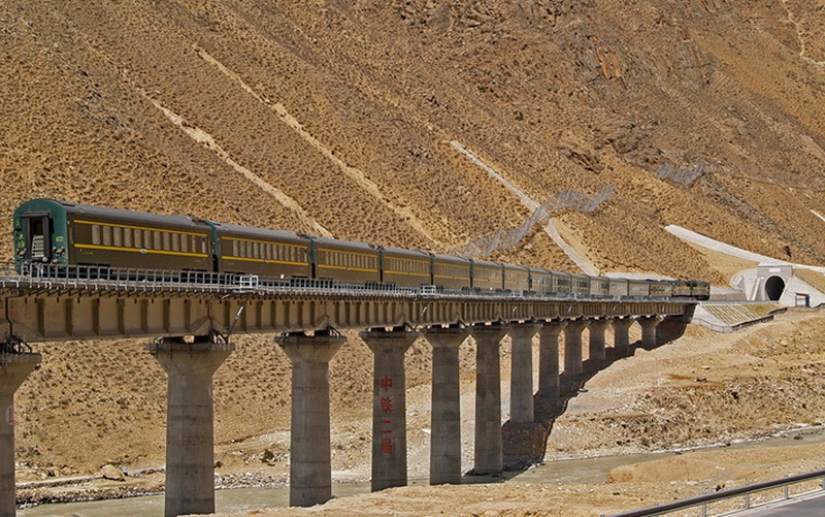
Standard cars are divided into the usual three classes for us: sitting, reserved seat and compartment. In addition, there are dining cars on the trains.
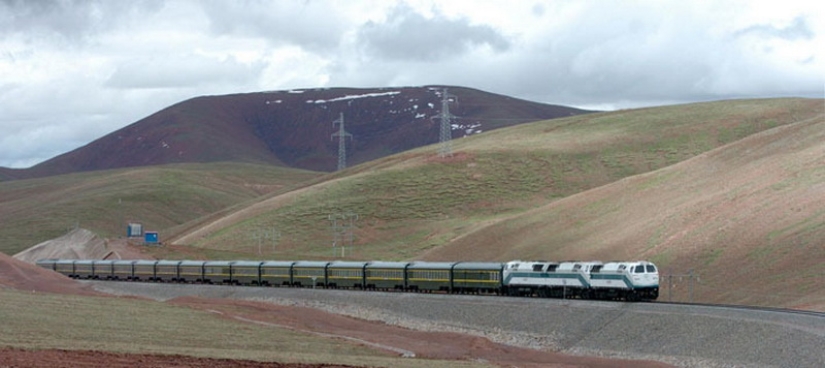



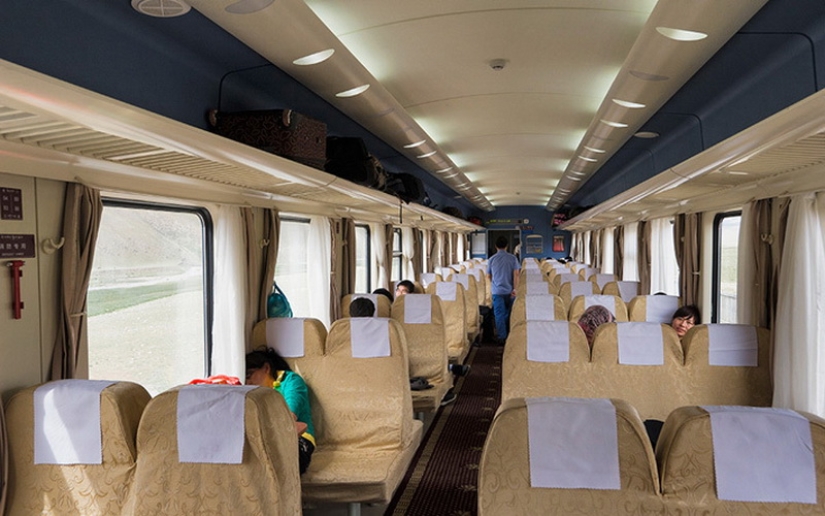

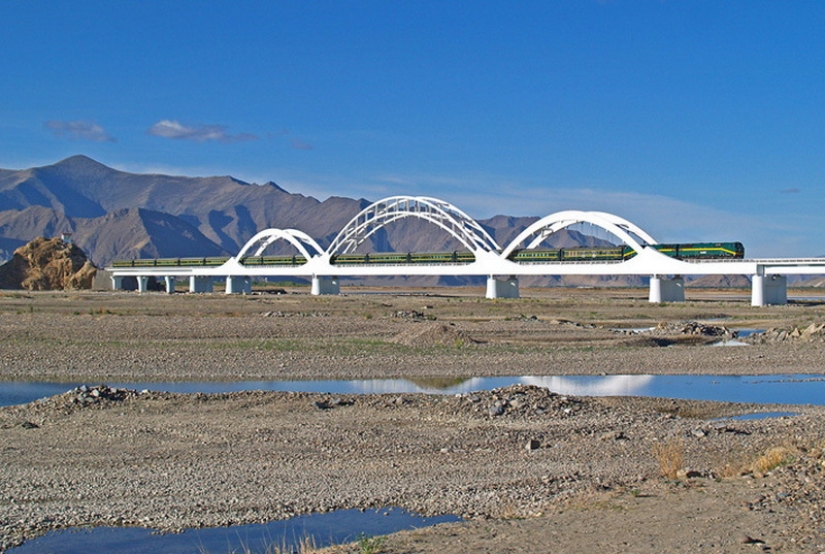
The capacity of the main line is eight pairs of passenger trains per day (not counting freight trains). Currently, Lhasa is connected by regular passenger traffic not only with the neighboring "regional" center of Xining, but also with the largest cities of the country — Beijing and Shanghai. The Beijing — Lhasa express is 44 hours on the way. The cost of tickets, depending on the class, ranges from $125 (reserved seat) to $200 (compartment).

The construction of the Qinghai-Tibet Railway began in 2001. About 20,000 workers who simultaneously started laying the highway from both endpoints (Golmud and Lhasa) coped with the responsible task of the party in just five years, spending $3.68 billion dollars. According to official data, no one was killed, even despite the long work in not the most comfortable conditions for this.


During the seven years of operation, more than 63 million passengers and 300 million tons of cargo were transported along the road. The annual passenger turnover increased from 6.5 million people in 2006, when the highway was put into operation, to 11 million people in 2012, the annual cargo turnover increased from 25 million tons in 2006 to 56 million tons in 2012. It is already obvious that the new railway has significantly intensified the economic development of Tibet and the neighboring province of Qinghai.

The delivery of goods to Tibet, including especially valuable energy carriers in mountainous conditions, has become significantly cheaper. The tourism industry has also received a new impetus to development, although it is still impossible for anyone who wants to leave, for example, on the Beijing train to Lhasa. To visit Tibet, the Chinese government still requires a special permit, without which you simply will not be put on the train.
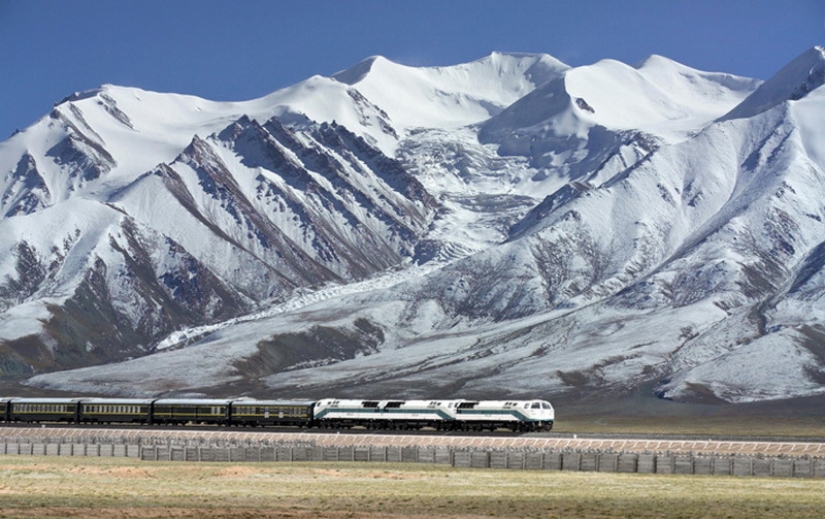
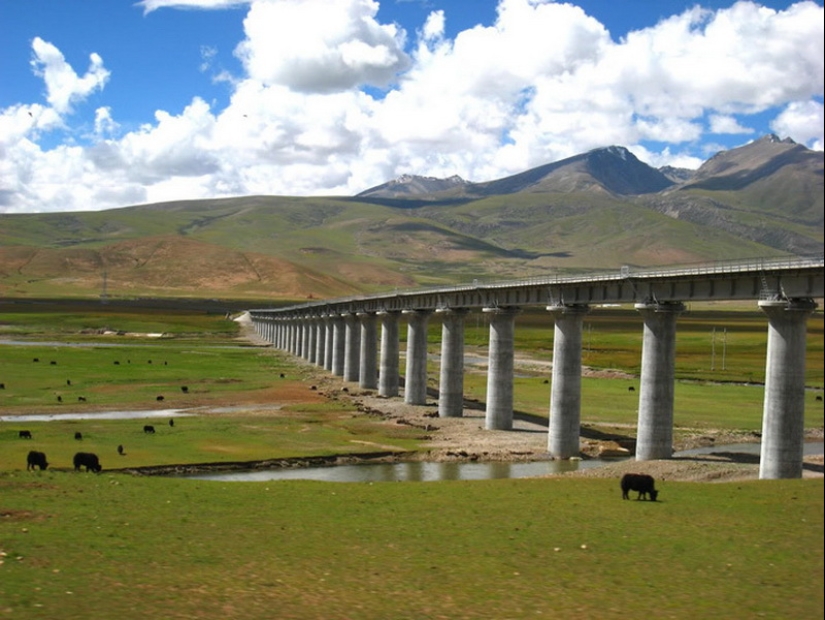
Skeptics consider the Qinghai-Tibet Railway only the next stage of the gradual Chinese colonization of a kind of autonomous region and the locomotive of the development of its natural resources. Geologists have already discovered deposits of copper, lead and zinc in the mountainous regions of Tibet, raw materials that are extremely necessary for the rapidly growing Chinese industry.
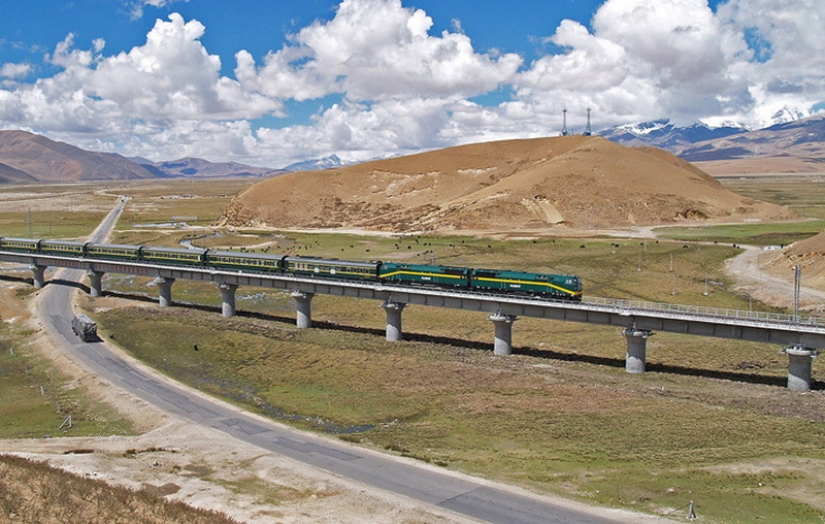
Environmentalists, of course, are afraid that the presence of a modern railway line in the region will only spur the Chinese government to develop these deposits as soon as possible with unpredictable consequences for the fragile ecosystem of the region.
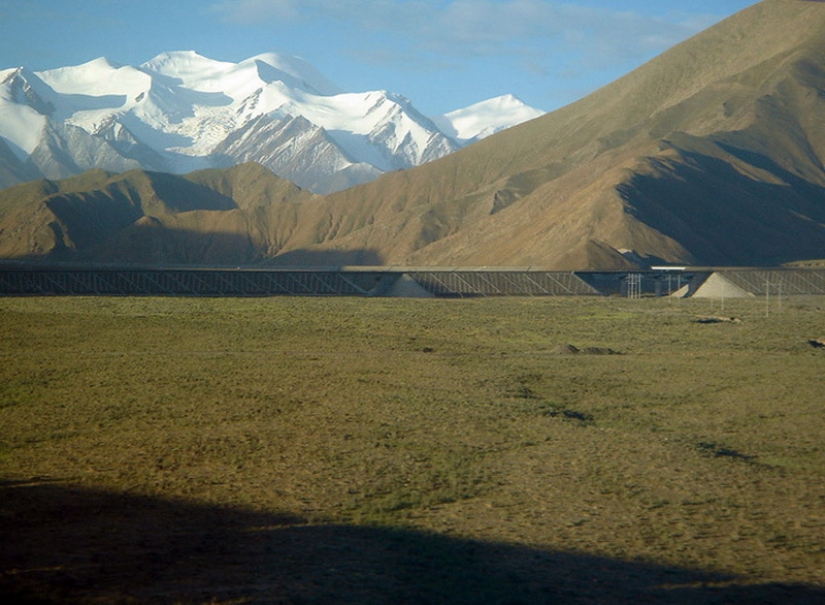
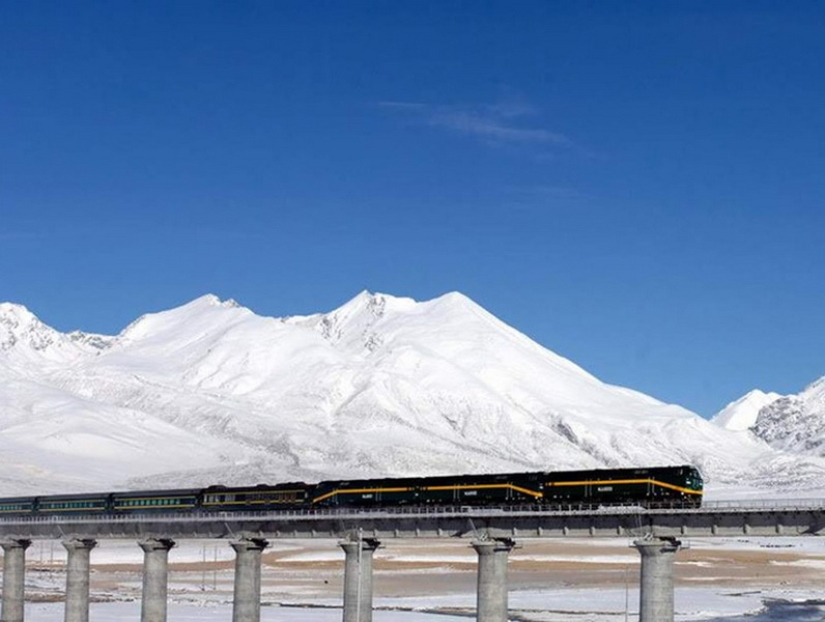
However, so far these are only unconfirmed fears. But it is difficult to deny the popularity of the road among the residents of Tibet, who have the opportunity to easily and quickly get to the highly developed eastern regions of the country, and especially among tourists, for whom the highway is a wonderful attraction created with typical Chinese perseverance, literally turning mountains.
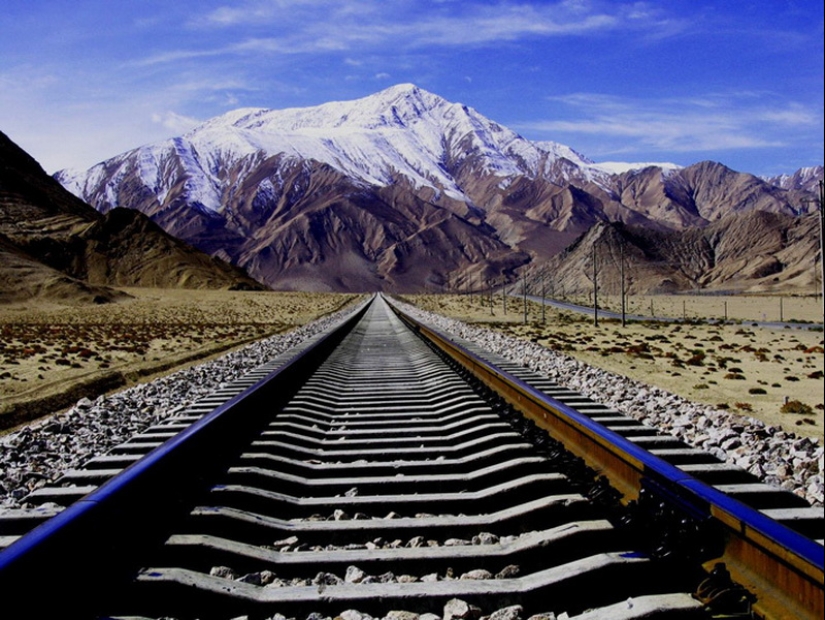
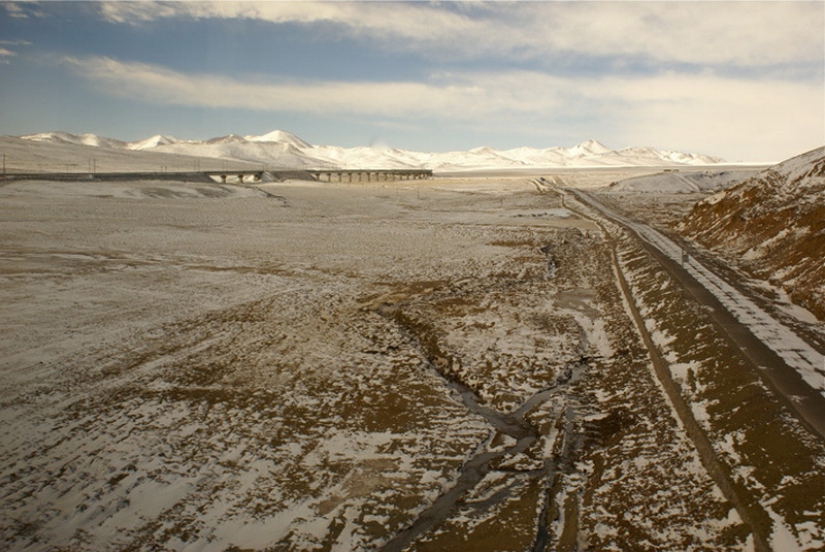
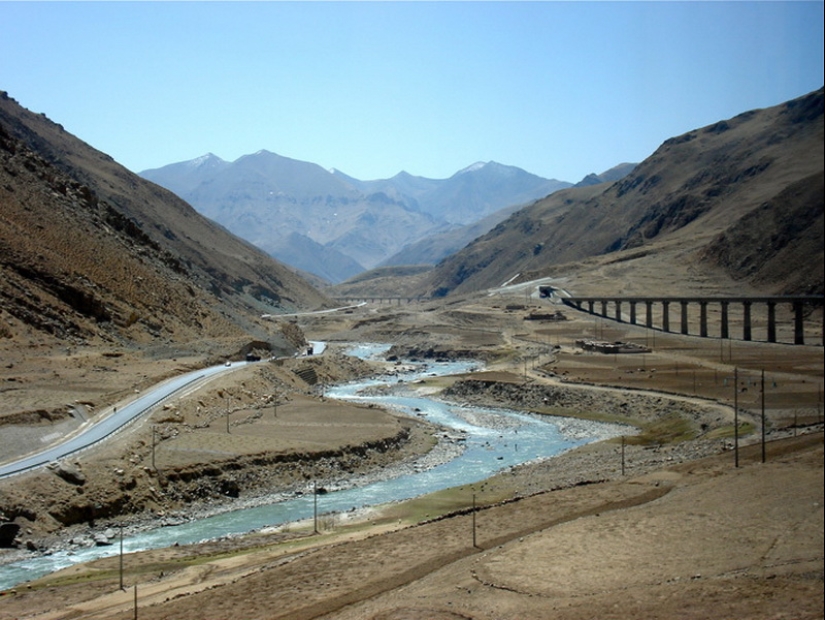
Keywords: China | Asia | Tibet | Construction | Railway
Post News ArticleRecent articles

Most of us loved as kids magic tricks, but someone loves them right now. However, the attitude to the hoax became a few others ...

Everything is changing. This is well and has long been known to everyone. But when something stays with you for a long time, it is ...
Related articles

The Himalayas. Tibet. Something cosmic and ethereal sounds in the names. They attract visitors from all over the world. In front of ...

We are accustomed to the fact that on the packaging of tea, write "loose" and rarely think about what the word means. Meanwhile, ...

The Indochina Peninsula, located in southeast Asia, is a favorite place for tourists all over the world. Myanmar, Thailand, Laos, ...

Compared to the 1970-ies 1980‑e years were a time of cautious optimism in new York. Boom on wall street fueled the speculative ...